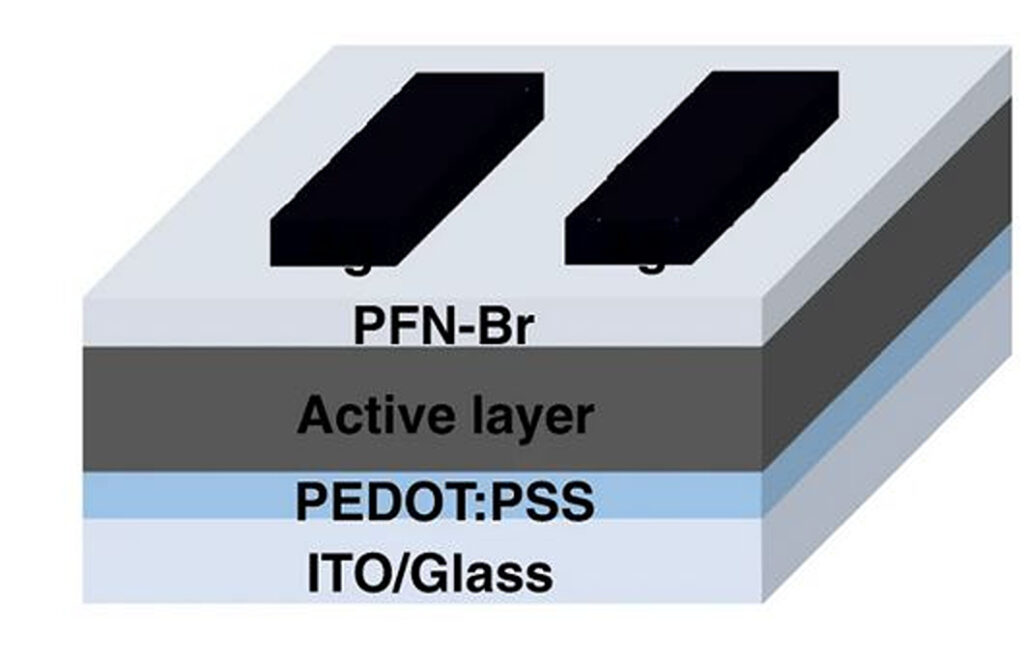Schematic representation of the organic solar cell
Image: The Hong Kong Polytechnic University, Nature Communication, Common License CC BY 4.0
A research team led by Hong Kong Polytechnic University developed a non-monotonic intermediate state manipulation (ISM) strategy aimed at increasing energy conversion efficiency and reducing non-radiative recombination losses in organic photovoltaic (OPV) cells.
The scientists have configured a new technique for regulating the morphology of organic solar cells by using 1,3,5-trichlorobenzene as a crystallization regulator. Their cell contained one donor and one acceptor in the photoactive layer. They then applied the ISM strategy to both manipulate the bulk heterojunction organic solar cell morphology and optimize the crystallization dynamics and energy loss of the non-fullerene organic absorber.
They explained that their ISM strategy, which took about two years to devise, promotes the formation of more ordered molecular stacking and favorable molecular aggregation compared to traditional solvent additives.
The academics built the cell with a substrate of glass and indium tin oxide (ITO), a layer based on the PEDOT:PSS polymer, the organic absorber and a layer of the PFN polymer.
The ISM strategy was found to be significantly beneficial for the energy conversion efficiency of the organic PV device, which reached 19.31%. According to the research group, this result represents a record for binary organic solar cells.
It was also found that the cell had a non-radiative recombination loss of just 0.168 eV, which the scientists say is significantly lower than that of counterparts built without the ISM strategy.
“The new finding will make organic solar cell research an exciting field, and this is likely to create enormous opportunities in applications such as wearable electronics and building-integrated solar photovoltaics,” said the study’s lead author Li Gang, noting that the results are very encouraging for the future. long-term research into organic solar cells.
The new cell design was described in the study “19.3% binary organic solar cells and low non-radiative recombination enabled by non-monotonic intermediate state transition,” published in communication about nature.
This content is copyrighted and may not be reused. If you would like to collaborate with us and reuse some of our content, please contact: editors@pv-magazine.com.

